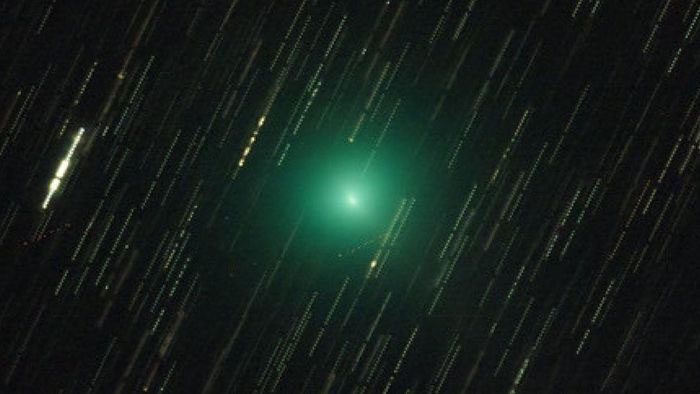“Monster Comet” the Size of a City Heads Toward Earth Following Its Latest Eruption.
“Monster Comet” is hurtling toward the sun and may have lost its distinctive horns that earned it a sinister nickname. Last week, following the most intense and recent explosion of the comet, the characteristic spikes at its head did not appear as they had after previous eruptions. However, astronomers have detected some new features of the comet, including a rare green color and a mysterious “shadow.”

12P will be the latest green comet to fly close to Earth next year. (Photo: Eliot Herman).
Comet 12P/Pons-Brooks (12P) is a massive comet measuring 17 kilometers across and is on track to reach its closest position to Earth in over 70 years next summer.
Comet 12P is classified as a cold comet or cryovolcano, consisting of a crust of ice or a nucleus filled with ice and gas. When the comet absorbs enough solar radiation, its internal icy components, known as cryomagma, become overheated. Pressure builds up inside the nucleus until the crust cracks, sending the icy insides of the comet into space. Following the recent eruption, a reflective and hazy cloud of dust and cryomagma expanded, making the comet appear significantly brighter to astronomers as it reflects sunlight.
Astronomers tracking the comet on November 14 observed that it became over 100 times brighter than normal in the following days. But this time, its distinctive horns did not appear.
According to Science magazine, this rare color is produced by comets with high levels of dicarbon, a chemical that emits blue light when broken down by sunlight.
Several green comets have passed by Earth this year, including the “green comet” C/2022 E3 (ZTF), which made its closest approach to Earth in 50,000 years in February, and Comet Nishimura, which passed by our planet for the first time in 430 years in September.
According to Space.com, 12P is currently accelerating toward the sun at a speed of about 64,300 km/h as it nears the end of its 71-year orbit around the sun.
On April 24, 2024, the comet will reach its closest point to the sun, known as perihelion, before being flung around our star and heading into the outer solar system, where it will spend most of its orbit. It may not return to the solar system until 2094.
12P will make its closest approach to Earth on June 2 next year, when it is hoped that it can be seen with the naked eye.


















































